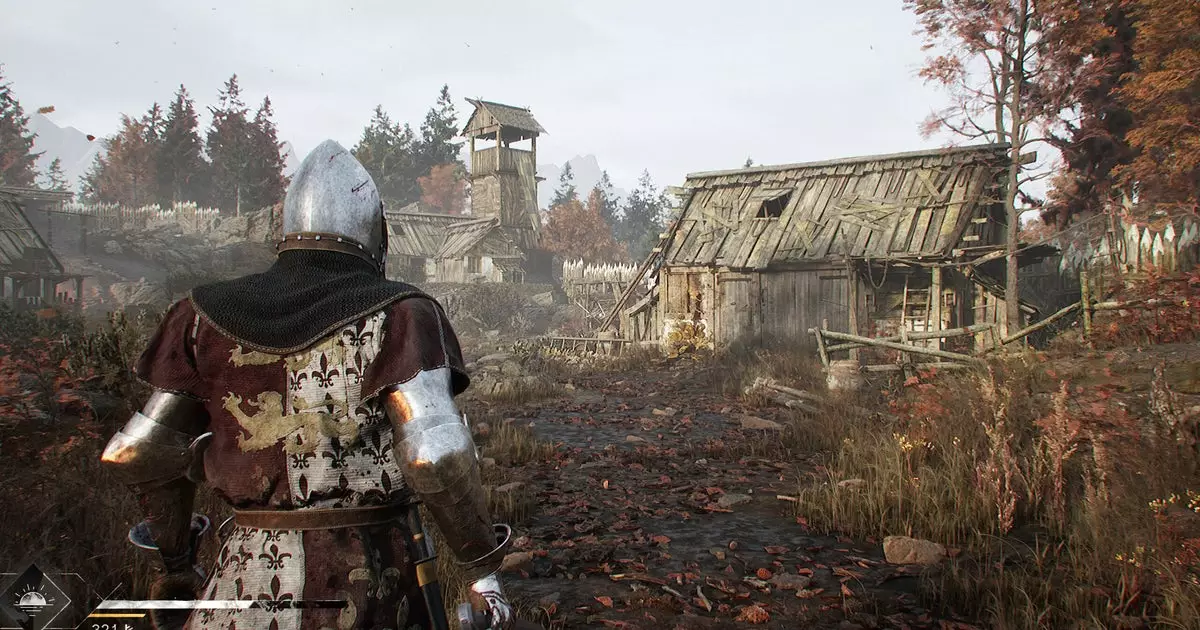In the ever-evolving landscape of action-horror gaming, few titles manage to stir intrigue quite like Haenir’s Blight: Survival. As players eagerly await its release, the development journey itself is rife with palpable excitement and also a twinge of skepticism. What began as a modest two-person venture has undergone significant evolution, now garnering attention for its captivating biomes and ominous lore. While my attempts to engage with its creators for deeper insights went unanswered, the lack of correspondence speaks to both the nascent stage of this ambitious project and perhaps the developers’ focus on refining their creative direction.
Blight: Survival explores a grim world plagued by a cacophony of conflict and decay—a middle ground between two warring kingdoms inhabited by grotesque undead villagers. The unsettling narrative backdrop lays the groundwork for compelling gameplay, one structured around players scavenging through chaos as grave robbers in search of weapons and gear. Although some may argue that the thematic depth of such a narrative seems superficial, there’s no denying the merit in crafting a visceral experience that allows players to immerse themselves in this ghastly world.
Gameplay Mechanics: A Dance of Combat
At the core of Blight’s appeal lies its intriguing combat mechanics, particularly the use of directional combat. This feature enables players to angle their swings and parries, offering a tactile feeling that many action games tend to overlook. While previous efforts in similar directions have met with mixed results, the success seen in titles like For Honor and Kingdom Come: Deliverance suggests that there is a sustainable formula here. This approach invites players to engage more deeply with the act of combat, transforming each swing of the sword into a deliberate, visceral movement that echoes through the game’s decaying landscape.
The premise of challenging foes and dominating the battlefield provides a roadmap for immersion, but it remains to be seen how well it translates into a cohesive gameplay experience. The game’s strategic back-and-forth between engaging with enemies versus securing hard-earned spoils harkens to the tension found in extraction-style games, a genre gaining traction in recent years. Decision-making—between retreat and advance—stands as a compelling element that could define the player’s experience, enhancing replayability and investment.
Dreadful Ambiance: Environments that Enslave the Senses
Visuals play an integral role in enveloping players within Blight: Survival’s haunting atmosphere. The landscapes are punctuated with swampy terrains, sinister chapels, and sickly trees, creating a tableau that feels simultaneously surreal and repulsive. Drawing inspiration from other successful titles—most notably the viscerally disturbing environments of A Plague Tale: Innocence and the high-stakes tension of Hunt: Showdown—Blight aims to assert itself as a remarkable entry in the horror genre.
What’s particularly striking is the game’s unabashed commitment to crafting a landscape steeped in discomfort and alienation. This ambition is likely to polarize the audience; however, for those willing to brave the gnarly undertow of swamp horror, an opportunity arises to explore untold depths while forging a personal narrative. The allure of exploration and inadvertent discovery beckons players to step away from conventional battlefields, expanding the horizons of engagement in unexpected ways.
Developmental Insights: Navigating Industry Turbulence
As Haenir’s ranks swell with a larger team from publisher Behaviour Interactive, the transition from a small project to a production machine is particularly noteworthy. The influx of talent—from narrative writers to VFX artists—suggests an intensified focus on improving the quality and depth of the overall player experience. However, this transition raises critical flags, especially considering the recent turmoil in the gaming industry, with layoffs and project shutdowns surfacing more frequently than we might prefer.
Players may find themselves feeling apprehensive about how this shift might influence the creative direction of Blight: Survival as developers juggle constraints of publishing demands alongside their original vision. Will it result in a watered-down product that sacrifices the idiosyncratic charm of a two-person endeavor? Or will it enhance the game with refined artistry and a well-executed scope? Only time will reveal the outcome, but the excitement surrounding upcoming playtests offers a peek into the direction Blight may take.
Ultimately, Blight: Survival presents an innovative premise that taps into the macabre allure of its universe. By blending thematic undertones with compelling gameplay mechanics and richly immersive environments, it positions itself among the ranks of titles that could redefine aspects of both the horror and action genres. Only time will tell if it delivers on that promise, but for now, anticipation lingers like the scent of damp earth after a storm.

